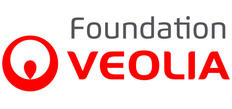
Environment and Biodiversity
Place
France, France
Sponsor
Benoît Lambrey
Grant
15,000 euro to the Selection Committee at 2006/07/04
Project leader
Frapna Rhône
"Capitalizing on knowledge, improving sharing of experience and communication: the complete overhaul of its information system - a project that will act as a pilot to the other 7 departmental federations – will enable Frapna Rhône to reach a new level of professionalism."
Benoît Lambrey
Frapna Rhône, set up in 1968, is one of seven departmental non-profit organizations belonging to the Rhône-Alpes Nature Protection Federation. Today it continues to be a major local player in preservation of nature and environmental education. Thanks to its expertise in many areas, including field studies, analysis of natural milieux, biodiversity protection and creation of educational tools, it is recognized as an important partner by local and regional authorities, other non-profit organizations and the public authorities, but also by private-sector companies like Veolia Environmental Services, which has worked with Frapna on a number of collaborative and environmental education projects aimed at customers and local residents.
Frapna participates actively in the international Greenmap.org network and produced the first-ever green map for a French town (Villeurbanne) – a green map charts and identifies all the sites, initiatives and services of environmental significance in a given area.
Managing, disseminating and utilizing a mine of information
To ensure continued development of its activities, improve its responsiveness to requests made by its partners and also to conserve and utilize more effectively its very rich collection of documents and pictures, Frapna Rhône, which employs 12 permanent staff, could no longer delay carrying out a complete overhaul of its IT tools. The acquisition of new hardware and software, half of which will be financed by the organization itself, will allow it to continue rolling out and updating more "green maps" – a concept already very popular in North America and a number of European countries – using a sophisticated geographical information system (GIS).

